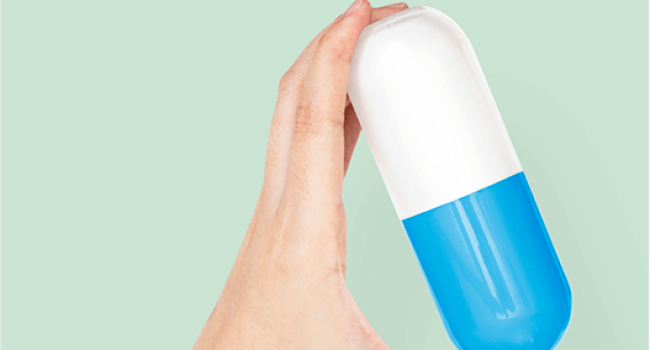Highlights
- Catapres, the brand name for clonidine, is used to treat high blood pressure, panic disorder, ADHD, and anxiety (off-label).
- Clonidine reduces the release of norepinephrine, a neurotransmitter associated with stress and anxiety.
- Clonidine is sometimes prescribed off-label to help with generalized anxiety disorder (GAD), post-traumatic stress disorder (PTSD), and other anxiety disorders.
- Potential side effects include drowsiness, dry mouth, constipation, and dizziness. Gradual dosage adjustments can help mitigate these effects. Severe side effects, though rare, should be reported to a healthcare provider immediately.
- Catapres should not be stopped abruptly due to the risk of rebound hypertension and increased anxiety symptoms. Always consult with a healthcare provider before making any changes to the medication regimen.
Read on to know more about Catapres, its uses, side effects, drug interactions, and other important aspects.
How to Use Clonidine for Anxiety
It’s important to always discuss the details of clonidine use with your healthcare provider. Typically, Catapres is taken by mouth, usually twice daily, one pill in the morning and one at bedtime. The smaller dose is usually taken at bedtime to decrease the chance that you experience any side effects.
Always take Catapres as prescribed and do not stop it abruptly even when you start seeing symptom improvement. Don’t stop taking it without consulting your physician because otherwise, you may experience adverse reactions. They can range from increased nervousness and agitation to severe headaches or being unable to control your movements.
The medication’s effectiveness may decrease as your body adjusts to it, so keep in touch with your clinician to adjust the dosage if necessary.
Missed Dose
If you miss a Catapres dose, take it as soon as possible. But if it is almost time for the next dose, skip the missed dose and resume your regular medication schedule. Do not increase the dose because you missed the previous one. If you miss more than one dose of your medication, consult your physician as soon as possible.
Side Effects of Clonidine
If the following
- Dry Mouth
- Weakness
- Agitation
- Fatigue
- Fever
- Headache
- Constipation
- Abdominal pain
- Anxiety
- Nausea
- Vomiting
- Decreased sexual activity
Severe symptoms that require immediate medical treatment include:
- Difficulty swallowing or breathing
- Swelling (throat, face, tongue, lips, eyes, feet, hands, ankles, or lower legs)
- Hives
- Hoarseness
- Rash
- Hypotension
Other side effects not listed above may occur. Always consult your doctor if you have concerns about any unusual symptoms you have while taking clonidine.
Symptoms of Catapres Overdose
Common symptoms of
- Confusion
- Tiredness
- Difficulty breathing
- Fainting
- Drowsiness
- Weakness
- Cold, pale skin
- Slurred speech
- Slow heart rate
In case of overdose, immediately call the poison control center at 1-800-222-1222. If you or another individual taking clonidine has a seizure, has trouble breathing, or has collapsed, please call 911.

Drug Interactions
Always be careful when using Catapres alongside other medications, as their interactions might slow down your breathing or make you feel sleepy. These medications include:
- Sleep medicines
- Antidepressants
- Beta-blockers
- Neuroleptics
- Alcohol, barbiturates, or sedating drugs
Always talk to your healthcare provider about your medical history before taking Catapres for anxiety to avoid unpleasant effects.
The Use of Clonidine for Panic Attacks
Panic disorder (PD) is among common anxiety disorders that can affect your day-to-day life. It can make you avoid certain places or situations that may trigger panic attacks. While Catapres will not cure panic disorder, it can help you manage it. It aims to reduce the severity and frequency of panic attacks, so the
Clonidine has been used in medicine for over 40 years and has proved its effectiveness in treating panic attacks. Manufacturers deliver this medicine in tablets or patches that act as long-lasting medicine or in solution forms. Clonidine is available in the following brand names:
- Nexiclon XR
- Catapres
- Kapvay
Clonidine Dosage for Anxiety
Your doctor will instruct you on which dosage to use and how often because it may vary for different people. Your dose may be adjusted multiple times to determine what works best for you. Never use more medicine or take it more often than your physician instructs you to.
Take the extended-release tablet orally without crushing, cutting, or chewing. You may take the tablet with or without food. Extended-release tablets act differently from immediate-release tablets, so avoid switching between these types except under your doctor’s instruction.
Catapres is usually accompanied by a vital information leaflet. Read it carefully, follow the instructions, and ask your doctor for clarification if needed.
For oral dosage with extended-release tablets, the dosage of Catapres for anxiety in adults depends on several factors. Clonidine is available in 0.1 mg, 0.2 mg, 0.3 mg tablets and transdermal patches. The starting dose of the tablet is usually 0.1 mg twice a day, and that of the patch is 0.1 mg once a day. Your doctor can change the dose subsequently depending on your response to treatment.
Dangers of Clonidine Withdrawal
There is little scientific evidence that Clonidine creates any euphoric effects, but people may still become dependent on it. Withdrawal symptoms can be severe and should be closely monitored by a medical professional. Common symptoms include:
- Fatigue
- Anxiety
- Headache
- Vomiting
- Tremors
- Insomnia
- Depression
Clonidine withdrawal is sometimes dangerous and can be fatal. Don’t stop taking the prescribed dose without consulting your doctor, as it may result in withdrawal symptoms. In case of any side effects, immediately contact your physician.
Signs of Clonidine Abuse
Clonidine abuse may happen when a patient takes larger or more frequent doses than prescribed. Mixing clonidine with alcohol or other drugs can indicate abuse and can be dangerous, increasing the risk of overdose or adverse reactions. Someone abusing Catapres may withdraw from social activities or isolate themselves from friends and family. Some signs and symptoms of clonidine abuse include:
- Mood swings
- Irritability
- Agitation
- Neglecting responsibilities
- Depression
- Tremors
- Headaches
- Dizziness
- Drowsiness
- Blurred vision
- Dry mouth
- Constipation
- Low blood pressure
- Pinpoint pupils
- Slowed heart rate
- Difficulty breathing
- Coma
If you suspect someone is abusing clonidine or any other substance, it’s important to encourage them to seek help from a healthcare professional or addiction specialist.
Consult on Using Clonidine for Anxiety Treatment With Experts
Join MEDvidi to get online help from licensed healthcare providers. Our medical professionals are well trained and qualified in treating mental health disorders, such as anxiety, panic disorders, and others.
It can be time-consuming and difficult for some patients to go to a medical facility. MEDividi provides convenient and cost-effective online treatment from the comfort of your own home, including online prescription for clonidine or another anxiety medication if deemed appropriate.
Frequently Asked Questions
Is Сlonidine like Xanax?
Clonidine and Xanax are different medications. Clonidine, an alpha-2 adrenergic agonist, treats hypertension, ADHD, pain, and withdrawal symptoms. Xanax, a benzodiazepine, is primarily prescribed for anxiety and panic disorders.
Clonidine reduces heart rate and blood pressure by stimulating alpha-2 receptors, while Xanax enhances GABA’s calming effect on the nervous system. Clonidine has a lower abuse potential and common side effects like dry mouth and drowsiness, whereas Xanax has a higher risk of dependence and causes drowsiness and dizziness. Consult a healthcare provider for advice specific to your condition.
How does Catapres make you feel?
Catapres can produce a calming effect, often leading to feelings of relaxation and sedation. Commonly, it causes drowsiness or lightheadedness, so it’s typically taken at night to minimize daytime sleepiness. The overall effect varies based on the individual and their condition, but сlonidine generally helps reduce anxiety and hyperactivity by calming the nervous system.
Is clonidine a mood stabilizer?
Clonidine is not classified as a mood stabilizer. While it can have calming effects and reduce symptoms of anxiety and hyperactivity, it is not typically prescribed to stabilize mood in conditions like bipolar disorder. Mood stabilizers include medications like lithium, valproate, or certain antipsychotics. Always consult a healthcare provider for appropriate treatment options for mood disorders.
How fast does Catapres work for panic attacks?
Catapres can begin to take effect within 30 to 60 minutes for managing panic attacks but this time span may vary depending on prescription guidelines and individual health features. Do not exceed the prescribed dose and always consult a healthcare provider to determine the most appropriate treatment for your specific needs.
Is Catapres a sedative?
Clonidine is not classified as a sedative and is not primarily prescribed for this purpose, but it has sedative effects. Always consult a healthcare professional before using clonidine.
Who should not take Catapres?
Catapres may not be suitable for everyone. Individuals with a history of severe heart disease, recent heart attack, or certain heart rhythm disorders should avoid it. Additionally, those with kidney impairment, depression, or a hypersensitivity to clonidine or its ingredients should not take it. Pregnant or breastfeeding women should consult their healthcare provider before using clonidine, as its safety during pregnancy and lactation is not well-established. Always discuss your medical history and any current medications with your doctor before starting Catapres or any new medication to ensure it is appropriate for you.
Can clonidine be used with PRN?
“PRN” stands for “pro re nata” a Latin term meaning “as needed” or “as the situation arises.” It indicates that medication should be taken only when necessary, rather than on a fixed schedule. Catapres can be used as PRN for certain conditions like anxiety or agitation only if your healthcare professional recommends such use, establishes appropriate dosing regimens, and ensures compatibility with other medications or medical conditions.













